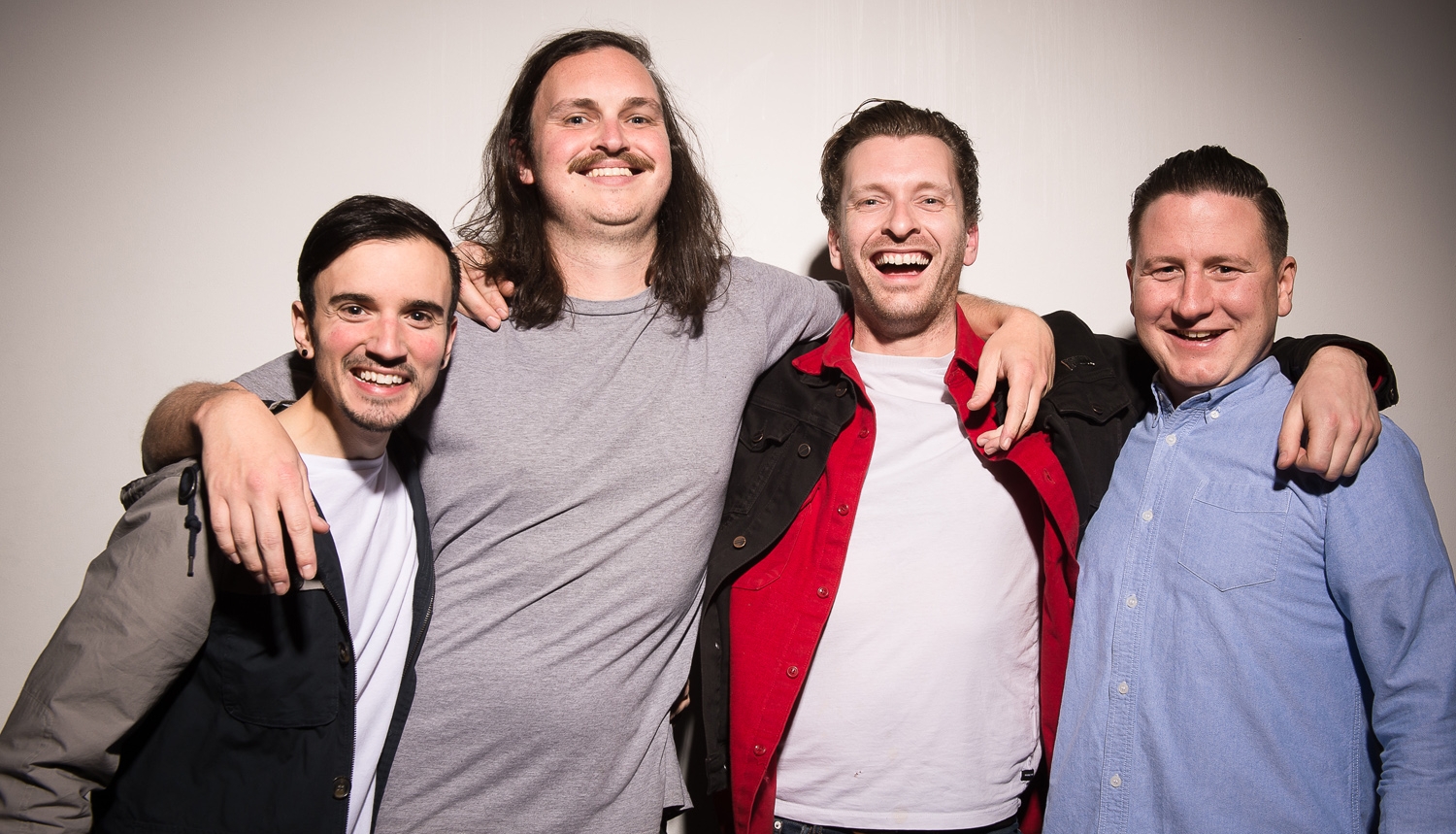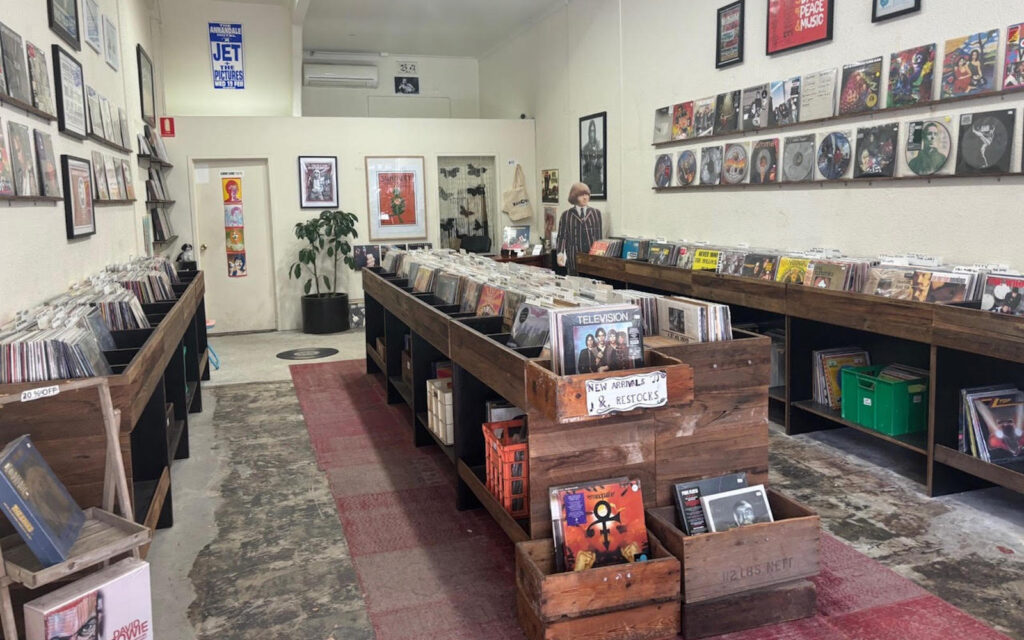For Lanyon, the signing is not only a surreal moment for him and his bandmates, but it also holds a surprising relevance to the history of the band.“I’ve told this story before,” says Lanyon, “but the whole reason this band started was because Rhys [Vleugel, guitarist] and I were both at the same party a few years ago. I was wearing a No Sleep Records shirt, and he approached me to compliment me on it. We got to talking, and before you knew it we were in the same room playing guitars together. It’s absolutely crazy that it’s all come full circle like this. I wonder if I still have that shirt? I hope I didn’t throw it out or sell it – I get to wear it legitimately now.”
Drag It Down On You arrives two years after the band’s debut, I Don’t Want To Be Anywhere But Here. Since its release, Ceres have risen exponentially in profile – when they haven’t been filling out shows in their own right, they’ve been touring the country with the likes of Violent Soho, Say Anything and The Hotelier. Even with this taken into consideration, not even Lanyon himself could’ve anticipated what would happen next when, out of the blue, he decided to send over some demos he was working on to Los Campesinos! guitarist Tom Bromley – if only just to see what the Welsh indie rocker might say about them.
“I didn’t even email him,” says Lanyon, audibly cringing at the informality and naivete of this initial contact. “You know the little contact form that you can fill out on Soundcloud profiles? That’s what I did. I don’t even know why I thought that was the right thing to do – what kind of psycho does that? I went to bed regretting ever clicking send – I figured he would never see it; and if he did, there was no way that he’d respond. The next morning, I checked my inbox and I saw a message from him. ‘These are really good. Let’s talk’.”
From there, Bromley came over to Melbourne to work with the band – Lanyon, Vleugel, bassist Grant “GY” Young and drummer Frank Morda – directly on Drag It Down On You. A lot of factors were weighing in on the importance of the album’s creation – Lanyon’s highly-emotional songwriting, the inclusion of a complete outsider in the production process – but one fact loomed overhead for the entire development of the album: This record was to be Vleugel’s swansong, departing the band after being one of its founding members.
“Hiscommitments in life were really starting to impose on him,” says Lanyon. “It got to a point where something had to give. There’s absolutely no bad blood, we all still love him, and he did such an amazing job on this record. I don’t think I’ve ever seen him as happy as he was when he was recording Drag It Down On You. The demands of touring were getting too much, and it was getting to the point where we couldn’t work around Rhys’ availabilities. Finishing the record was so emotional for us – we were so stoked to finish this album, but we were also sad to be losing the guy that started the band to begin with.”
In Vleugel’s place comes Sean Callanan, who some expertly keen eyes may recognise as sound engineer for The Smith Street Band. Having been a long time friend of the band, Callanan felt like a no-brainer to enter the Ceres fold. “We came to one another at the same time,” says Lanyon. “We’d thrown around the idea of getting him in, and he had approached us and offered up his services. This all went down at the Smith Street show at the Hi-Fi [now known as Max Watt’s], and so we spoke to the Smith Street guys about it as well. We’re going to make it work and we got the blessing to go ahead with it, and everyone that we’ve told is so excited. Of course we’ll miss Rhys, but if we were going to get anyone to replace him, we’re glad it was Sean.”
While in some ways the album is a continuation from the foundations established by I Don’t Want To Be Anywhere But Here, it’s ultimately reductive to consider Drag It Down On You a ‘part two’ of sorts. Rather, Drag is a further development of the band’s abilities – sending the band simultaneously into territory that’s heavier, softer, louder and quieter. It’s an inventive stretch of what was already a versatile sound, which is something that Lanyon himself is particularly proud of. He points to the album’s sprawling closer, Baby’s Breath, as the most substantial step forward he’s made as a songwriter between albums one and two.
“Frank reckons I’ve had this demo forever – the start of the song was around for years and years,” he says. “There’s this book by Tim Winton called The Turning, and it’s a collection of short stories. One of the stories is called Boner McPharlin’s Moll, and there’s this line in it: ‘You see that tree? That’s my mother’s screamingneck/You can hang me from that tree, I don’t care.’ That immediately hit me, and I started writing around that line. I knew then and there that I had to use it. The song became about my family, about me, about my own insecurities about the band. It became such a cathartic thing to be singing about. I got to let everything out. It became my favourite song on the record, and I want to start ending our sets with it. I’m worried I might not be able to, though – it ends with me screaming for something like 90 seconds. I’m not sure if I have it in me, but I’m going to try.”
The album is completed by its stunning cover art, discovered entirely on accident by Lanyon on his girlfriend’s phone. “I was so taken by this photo, I had to know where she’d taken it,” he says. “She told me it was a flowering bush that she’d taken a few photos of, and it was just down the street from where my brother lives. There was something about it that was so affecting – it’s somehow inviting and welcoming, yet imposing and violent at the same time.” Kind of like Ceres, right? Lanyon laughs: “Something like that.”
BY DAVID JAMES YOUNG







